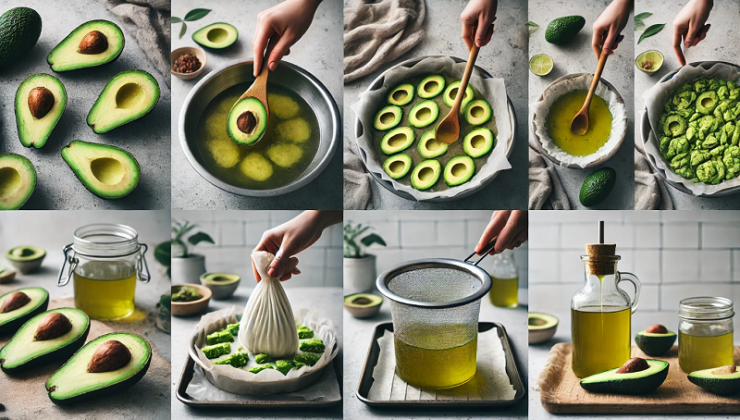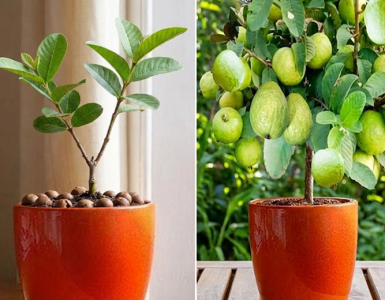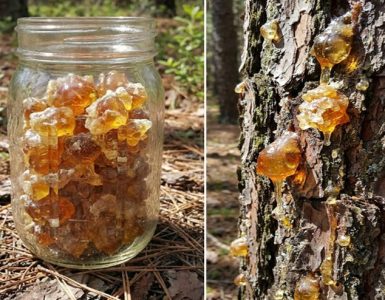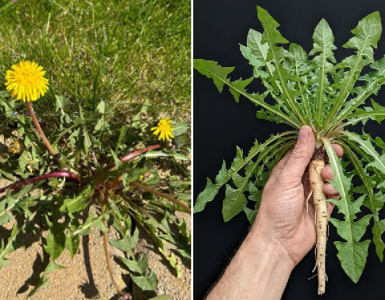Avocado oil is a versatile, nutrient-packed oil that’s known for its heart-healthy fats, antioxidants, and skin-boosting benefits. While it’s easy to find in stores, making your own avocado oil at home is a simple process that allows you to control the quality and freshness. Whether you want it for cooking, skincare, or hair care, here’s the easiest way to make your own avocado oil at home.
Why Make Avocado Oil at Home?
Making avocado oil at home ensures that you’re getting pure, unrefined oil without any additives or preservatives. Store-bought oils are often processed at high temperatures, which can degrade the nutrients and affect the flavor. By making it yourself, you can enjoy the full health benefits of fresh, cold-pressed avocado oil.
What You’ll Need:
10-15 ripe avocados
Blender or food processor
Cheesecloth or fine mesh strainer
A large bowl
A baking sheet (optional)
A jar or bottle for storage
Step-by-Step Guide to Making Avocado Oil at Home
1.Select and Prepare the Avocados
The key to extracting the best oil is using ripe avocados. Look for avocados that are soft to the touch but not overly mushy or spoiled. You’ll need around 10-15 avocados to extract a significant amount of oil.
Steps:
Slice each avocado in half and remove the pit.
Scoop out the avocado flesh and place it in a large bowl.
2.Blend the Avocado Flesh
Once you’ve collected the avocado flesh, you’ll need to blend it into a smooth, creamy paste.
Steps:
Place the avocado flesh into a blender or food processor.
Blend the avocado until it reaches a smooth, consistent texture. You may need to scrape down the sides of the blender to ensure everything is evenly blended.
3.Heat or Dehydrate the Avocado Paste
This step is where you begin to extract the oil. There are two methods: the heating method and the dehydration method.
Heating Method (Quick):
Preheat your oven to 180°F (80°C).
Spread the blended avocado paste evenly onto a baking sheet.
Place the sheet in the oven and let the paste cook for 4-5 hours. Stir occasionally to prevent it from burning.
Once the paste turns dark green or brown and begins to separate, it’s ready for oil extraction.
Dehydration Method (No Heat):
If you prefer not to heat the avocado, you can let the paste air dry in the sun for 1-2 days. Place the paste on a tray and cover it with a cheesecloth to keep insects away. This method retains more nutrients but takes longer.
4.Extract the Oil
After the avocado paste has either dried or cooked, the oil will begin to separate from the solids. Now it’s time to extract the oil.
Steps:
Place the avocado paste into a cheesecloth or fine mesh strainer over a large bowl.
Gently squeeze the cheesecloth to release the oil. You may need to apply some pressure to extract all the oil from the paste.
Allow the oil to drip into the bowl. Once you’ve squeezed out as much as possible, let the oil settle for about an hour.
5.Filter and Store the Oil
To ensure your avocado oil is as pure as possible, you’ll want to filter out any remaining solids.
Steps:
Pour the collected oil through a fine mesh strainer or an extra layer of cheesecloth into a clean jar or bottle.
Store the oil in an airtight glass container in a cool, dark place to maintain freshness. Homemade avocado oil can last up to 1-2 months if stored properly.
Tips for Success:
Use ripe avocados: The riper the avocado, the easier it is to extract the oil. Overripe or mushy avocados may not yield as much oil and could affect the flavor.
Be patient: The process of making avocado oil, especially with the dehydration method, requires patience, but the end result is worth the wait.
Store in a dark container: Exposure to light can cause avocado oil to degrade more quickly, so it’s best to use dark glass bottles for storage.
Uses for Homemade Avocado Oil:
Cooking: Avocado oil has a high smoke point, making it perfect for frying, grilling, and sautéing.
Salad Dressing: Drizzle it over salads for a rich, nutty flavor or use it as a base for homemade dressings.
Skincare: Apply the oil directly to your skin as a natural moisturizer or use it as a carrier oil for essential oils.
Haircare: Massage avocado oil into your scalp and hair to nourish and hydrate your locks, leaving them soft and shiny.
Making your own avocado oil at home is an easy and rewarding process that allows you to enjoy pure, unrefined oil for cooking, skincare, and more. With just a few avocados and some simple steps, you can create a high-quality oil that’s packed with health benefits and flavor. Try it out for yourself, and you’ll never go back to store-bought avocado oil again!






Add comment